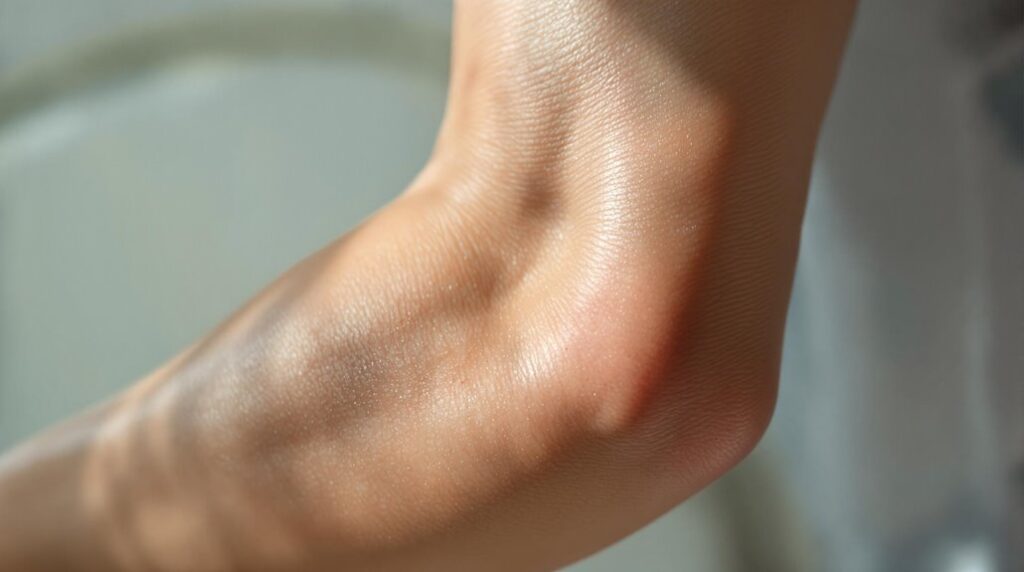If you're looking for photos of tennis elbow, you'll notice they often show athletes experiencing pain and discomfort, especially when gripping objects or extending their wrists. These images highlight the outer elbow's inflammation, which results from repetitive arm motions, primarily in sports like tennis. Common depictions include grimaces and cradling of the elbow, emphasizing the struggle with this condition. For more detailed information on symptoms, causes, and effective treatment options, keep exploring the topic.
Overview of Tennis Elbow
Tennis elbow, or lateral epicondylitis, is a condition that can markedly impact your daily activities and athletic performance, especially if you frequently engage in repetitive arm motions. This common ailment usually arises from overuse, leading to pain and inflammation on the outer part of your elbow. Athletes, particularly tennis players, are often more susceptible due to their swinging actions, which involve significant wrist and arm movement. The discomfort can intensify during activities that require extending the wrist or gripping objects. To prevent tennis elbow, focus on using proper techniques during sports, and consider rehabilitation exercises. Therapeutic interventions like physiotherapy and supportive tape can also aid recovery, allowing you to maintain your active lifestyle while minimizing the risk of injury.
Symptoms and Pain Depictions
Experiencing pain in the outer elbow can signal the onset of tennis elbow, a condition often characterized by specific symptoms. Images frequently showcase sporty individuals, clutching their elbows in discomfort during or after playing tennis, effectively illustrating the pain associated with this injury. Close-up photos highlight the elbow joint, often marked with red to indicate areas of heightened sensitivity and discomfort. Emotional expressions captured in these images, such as grimaces or frowns, reflect the distress athletes endure during physical activities. Visuals also depict the common posture of someone suffering from tennis elbow, such as cradling the elbow or grimacing while performing repetitive motions. These representations reinforce the significant impact of tennis elbow on athletic performance and daily activities.
Causes and Risk Factors
While engaging in repetitive wrist and arm motions, you may unknowingly increase your risk of developing tennis elbow, also known as lateral epicondylitis. This condition often arises from overuse of the extensor muscles responsible for wrist and finger extension, leading to microtears in the tendons and pain in the elbow. Statistics show that approximately 1-3% of the general population and up to 50% of tennis players experience symptoms at some point. Additionally, improper technique during sports can greatly heighten your risk, highlighting the need for good form. Most commonly affected are individuals aged 30 to 50, making tennis elbow a prevalent issue among middle-aged athletes and active individuals. Understanding these causes and risk factors is vital for prevention.
Rehabilitation and Treatment Options
Understanding the causes and risk factors of tennis elbow sets the foundation for effective rehabilitation and treatment options. Rehabilitation typically includes therapeutic exercises that strengthen forearm muscles and improve flexibility, which can alleviate pain and prevent future injuries. You might consider using therapeutic tape on your elbow for added support during activities, as it helps stabilize the joint and reduce pain. Physiotherapy treatments, like ultrasound therapy, enhance blood flow and promote healing of the injured tendon. Incorporating adequate rest and gradually returning to activities is essential; overexertion can prolong recovery. Many athletes find success with elbow braces or orthoses, as they help distribute stress away from the injured area, supporting proper alignment and aiding recovery.
Medical Illustrations and Concepts
Medical illustrations serve as an essential tool in understanding tennis elbow, particularly because they visually communicate complex anatomical structures and pathologies associated with this condition. These illustrations often highlight inflammation and damage to the extensor tendons, especially around the lateral epicondyle, which is commonly affected. Diagrams frequently include annotated details that outline the anatomy of elbow muscles, pinpointing areas most susceptible to injury during repetitive movements. Additionally, 3D rendered visuals offer a clear representation of the painful elbow joint, showcasing structural changes linked to lateral epicondylitis. Medical vector illustrations help educate both patients and practitioners about the pathology of damaged tendon tissue, while comparative images illustrate the differences between a healthy elbow joint and one impacted by tennis elbow, aiding in diagnosis.
Emotional Impact of Tennis Elbow
The emotional impact of tennis elbow often manifests as a profound struggle, as athletes grapple with not only the physical pain but also the limitations it imposes on their performance. This condition frequently leads to emotional distress, resulting in frustration and diminished motivation. When you can't engage in your favorite sport, feelings of isolation and sadness can arise, greatly affecting your mental well-being. Research indicates that chronic pain conditions like tennis elbow correlate with increased anxiety and depression, especially among those who rely on physical activity for emotional relief. Additionally, the visible discomfort during play highlights the emotional toll, as it can undermine your self-esteem and challenge your identity, particularly if competitive sports are central to your life.
Preventive Measures and Techniques
Living with the emotional challenges of tennis elbow can be a heavy burden, making it even more important to focus on preventive measures and techniques. First, proper technique in sports, particularly tennis, is essential to minimize repetitive wrist and arm motions that often lead to injury. Strengthening your extensor muscles through targeted exercises can greatly reduce the risk of overuse injuries. Additionally, using supportive gear like elbow braces or therapeutic tape can provide necessary stability during physical activities. Regular stretching and warm-up exercises enhance flexibility, lowering the chance of tendon injuries. Finally, educating yourself on the early signs of elbow discomfort allows for timely intervention, preventing the progression to chronic pain and ensuring a more sustainable athletic experience.


